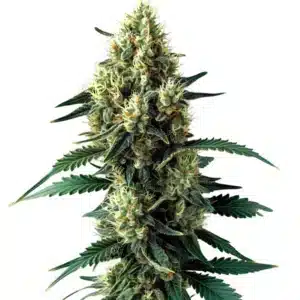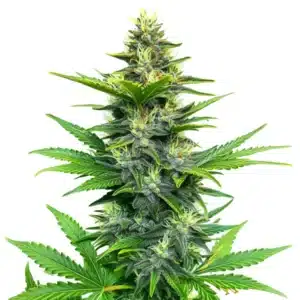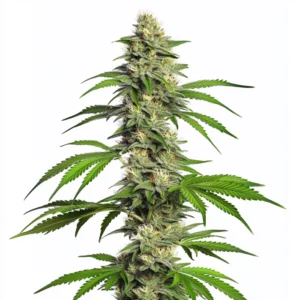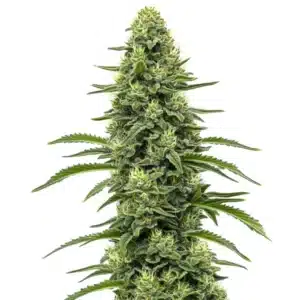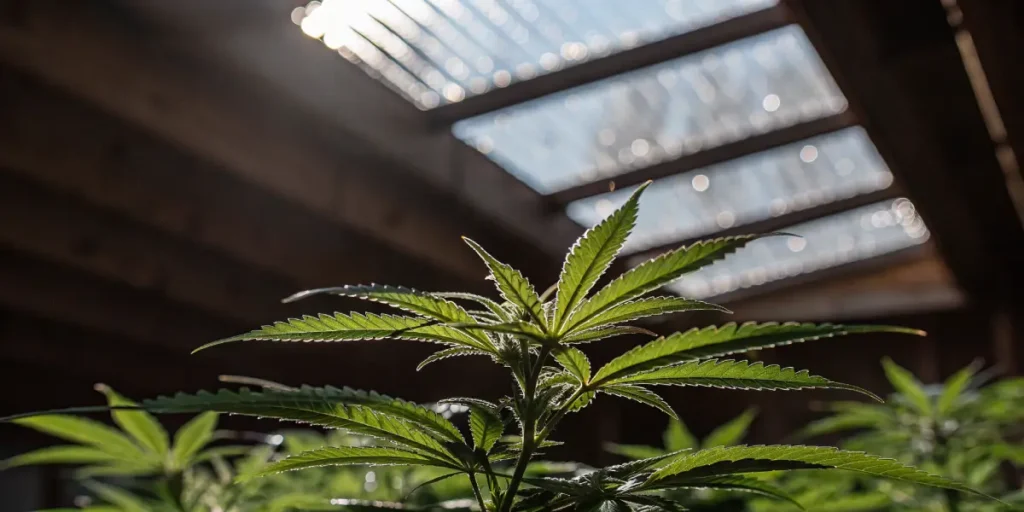
The Significance of Water Movement in Marijuana Cultivation
The importance of water movement in marijuana cultivation cannot be overstated. It ensures that plants get the nutrients they need to thrive. Without proper water flow, cannabis plants may suffer from nutrient deficiencies, stunted growth, and even root rot.
Consider how cannabis plants absorb nutrients. They rely on water to transport vital minerals from the soil to their roots. This process is known as nutrient uptake. When water movement is effective, it optimizes the ability of marijuana roots to absorb these nutrients.
Recommended Strains
Gelato
|
|
THC | 27% (High) |
|
|
Type | Feminized |
|
|
Yield | High |
|
|
Phenotype | 50% Indica / 50% Sativa |
Blue Dream
|
|
THC | 17% - 24% (Medium) |
|
|
Type | Feminized |
|
|
Yield | High |
|
|
Phenotype | 50% Indica / 50% Sativa |
Strains like Gelato benefit from excellent water movement. This strain requires consistent moisture levels for ideal growth, making proper irrigation techniques crucial to its development.
Optimal Water Flow for Cannabis Growth
Optimal water flow is paramount for healthy cannabis growth. It involves maintaining a balance between too much and too little water. This balance ensures that plants receive enough moisture without drowning the roots.
Techniques like drip irrigation can help. This method allows water to slowly drip to the base of the plants, providing a steady supply. It also reduces water waste and prevents overwatering, crucial for strains like Blue Dream.
Besides to drip irrigation, soil moisture sensors are becoming increasingly popular among growers. These sensors provide real-time data on moisture levels, allowing for precise adjustments to watering schedules. This technology aids in achieving optimal water flow for cannabis growth by ensuring plants receive just the right amount of hydration.
Furthermore, mulching can play a significant role in maintaining soil moisture. By covering the soil with organic materials, evaporation is reduced, and the soil retains moisture longer. This practice supports the importance of water movement in marijuana cultivation by promoting consistent water availability.
Effects of Water Movement on Marijuana Roots
Roots are the lifeline of marijuana plants. They absorb water and nutrients, anchoring the plant in the soil. When water movement is inconsistent, roots can become waterlogged or dry out, affecting the overall health of the plant.
Healthy roots require consistent moisture. They thrive when water is evenly distributed. This is especially important for cannabis strains that have dense root systems.
Inconsistent water movement can also lead to the development of air pockets in the soil. These pockets can restrict root growth and nutrient uptake, leading to poor plant health. Ensuring even water distribution can prevent these issues and support robust root development.
Additionally, the effects of water movement on marijuana roots are evident in the plant’s ability to resist diseases. A well-hydrated root system is more resilient to pathogens, reducing the risk of root rot and other water-related diseases.
Promos & Deals
Water Circulation Benefits in Cannabis Farming
Water circulation benefits cannabis farming by promoting even moisture distribution. This enhances plant health and increases yield potential. Proper circulation also helps prevent diseases that thrive in stagnant water conditions. The importance of water movement in marijuana cultivation lies in ensuring roots receive oxygen, nutrients are evenly distributed, and plants remain resilient against stress.
Techniques such as ebb and flow systems can improve water circulation. These systems flood the growing area with water and then drain it away, ensuring roots receive ample oxygen while staying moist.
Implementing water circulation systems also contributes to efficient nutrient distribution. By continuously moving water, nutrients remain evenly distributed in the growing medium, supporting the nutrient uptake process.
Moreover, water circulation benefits in cannabis farming extend to temperature regulation. Moving water can help maintain a stable temperature in the root zone, which is crucial for optimal growth conditions and preventing stress-induced issues.
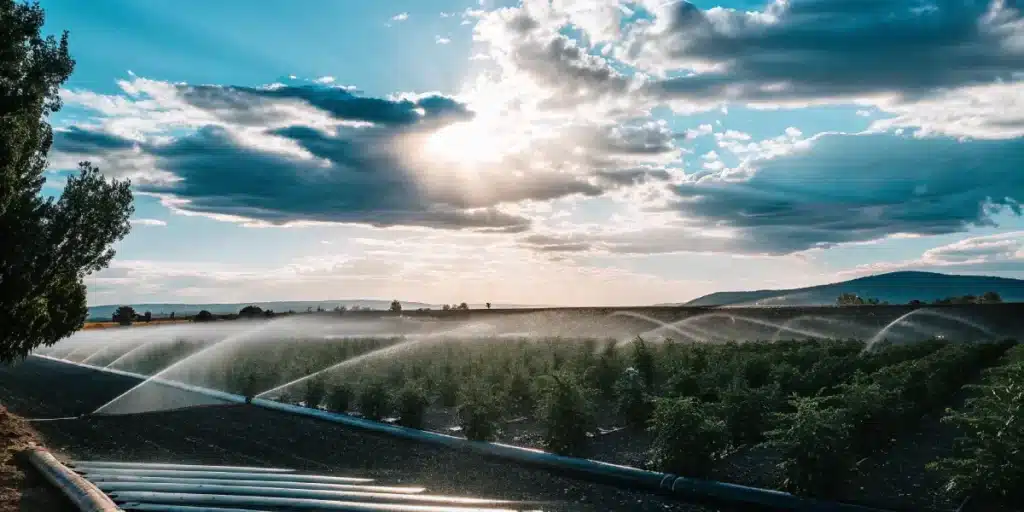
Role of Water Movement in Marijuana Nutrient Uptake
Nutrient uptake is vital for cannabis plants. Water acts as the vehicle that delivers nutrients to the roots. Without effective water movement, nutrient uptake is compromised, leading to deficiencies.
Efficient water movement ensures each plant receives the right amount of nutrients. This is crucial during the flowering stage, where nutrient demand is high.
The role of water movement in marijuana nutrient uptake becomes even more critical when considering hydroponic systems. In these setups, water is the primary medium for delivering nutrients, making consistent flow essential for plant health.
Additionally, the integration of fertigation systems, which combine fertilization and irrigation, highlights the importance of water movement in marijuana cultivation. These systems ensure that nutrients are delivered in precise amounts, optimizing plant growth and yield.
Impact of Irrigation Techniques on Cannabis Growth
Irrigation techniques greatly impact cannabis growth. Choosing the right method can mean the difference between a bountiful harvest and a disappointing yield. Each technique offers unique benefits that cater to different growing environments.
For outdoor growers, sprinkler systems might be ideal, providing widespread water coverage. Indoor growers often prefer hydroponics, where water movement is more controlled and efficient.
The impact of irrigation techniques on cannabis growth is also seen in water conservation efforts. Techniques like sub-irrigation reduce water usage by delivering moisture directly to the root zone, minimizing evaporation and runoff.
Furthermore, the choice of irrigation technique can influence the overall health of the grow environment. By selecting systems that promote optimal water flow for cannabis growth, growers can minimize the risk of water-borne diseases and enhance plant vitality.
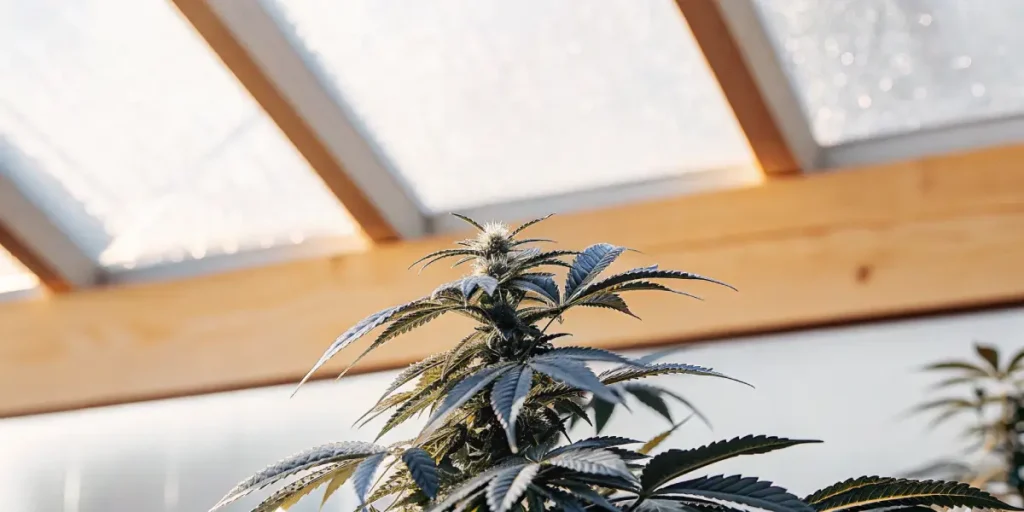
FAQs
How does water movement affect cannabis plant growth?
Water movement directly affects cannabis plant growth by facilitating nutrient distribution. Proper movement ensures that roots get access to the necessary nutrients, promoting healthy and robust plant development.
Without proper water movement, plants may exhibit signs of nutrient stress. This can manifest as yellowing leaves, slow growth, or weak stems. Ensuring optimal water flow helps prevent these issues.
Water movement also influences the plant’s ability to perform photosynthesis efficiently. Adequate hydration supports the plant’s metabolic processes, leading to vigorous growth and higher yields.
Moreover, consistent water movement helps maintain soil structure, preventing compaction and ensuring that roots have the space they need to expand and absorb nutrients effectively.
What are the effects of poor water movement on marijuana roots?
Poor water movement can lead to root problems such as rot and nutrient lockout. When roots are submerged in water for too long, they can suffocate and decay, leading to plant death.
Conversely, insufficient water can cause roots to dry out, making it difficult for them to absorb nutrients. This highlights the importance of water movement in marijuana cultivation.
Additionally, poor water movement can result in uneven nutrient distribution, causing some areas of the root zone to be over-fertilized while others are undernourished. This imbalance can stunt plant growth and reduce yields.
The effects of water movement on marijuana roots are also evident in the plant’s resilience to environmental stressors. Well-hydrated roots are better equipped to withstand fluctuations in temperature and humidity.
Why is water circulation important in cannabis farming?
Water circulation is important because it prevents stagnation, which can attract pests and diseases. Moving water keeps the environment healthy, allowing plants to grow without the threat of mold or root rot.
Effective circulation helps maintain consistent moisture levels, which is crucial for maximizing yield. It also ensures that all plants receive equal access to nutrients and water.
Besides to preventing disease, water circulation plays a key role in oxygenating the root zone. Oxygen-rich water supports root respiration, essential for healthy growth and development.
Water circulation benefits in cannabis farming are particularly evident in recirculating hydroponic systems, where nutrient solutions are continuously cycled to provide a consistent supply of nutrients and oxygen.
How do different irrigation techniques impact cannabis growth?
Different irrigation techniques offer varying levels of water control. Techniques like drip irrigation provide precise water delivery, reducing waste and preventing overwatering.
Other methods, such as sprinkler systems, are better suited for larger outdoor areas. Choosing the right technique depends on the specific needs of the cannabis strain and the grow environment.
The impact of irrigation techniques on cannabis growth is also reflected in the efficiency of nutrient uptake. Precise water delivery methods ensure that nutrients are evenly distributed, promoting balanced growth.
Moreover, advanced irrigation systems with automated controls can optimize water usage, adapting to environmental changes and reducing the risk of over or under-watering.
What is the best way to ensure optimal water flow for cannabis growth?
The best way to ensure optimal water flow is by using a combination of techniques tailored to your grow setup. Regularly check soil moisture levels and adjust watering schedules accordingly.
Using systems like hydroponics can offer greater control over water flow. This method allows for precise nutrient delivery, ensuring plants receive everything they need to thrive.
Incorporating rainwater harvesting can also contribute to optimal water flow for cannabis growth. This sustainable practice reduces dependency on external water sources and provides plants with naturally balanced water.
Additionally, periodic soil amendments can improve water retention and drainage, creating an ideal environment for root growth and nutrient absorption.




